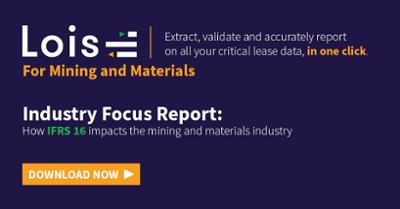Environmental, social, and corporate governance (ESG) have become increasingly important in recent years, especially as "socially responsible investors" seek to put their capital into companies that demonstrate strong ESG practices. Across most sectors today, including mining and materials, ESG factors are considered alongside traditional investment fundamentals.
As a capital-intensive sector that requires funding from traditional lenders, private investors and the public markets, mining and materials companies need to consider how the growing prevalence of ESG impacts their strategy and operations. Some companies in the sector are already feeling the pinch when it comes to attracting new capital investment due to the culture around ESG, so it's critical that organisations are proactive with changing their practices. While most companies currently report their ESG practices through a sustainability report which is separate from financial reporting, this may change as international bodies seek to integrate the two types of reporting.
In this article, we outline some of the key considerations mining, and materials companies need to make when it comes to ESG reporting and how businesses can be proactive in addressing ESG risks while capitalising on opportunities.
What is ESG?
It's important to note that ESG, while not a new concept, has become more widely known and accepted as a key risk and opportunity area for companies. There are several definitions of what makes up each area in ESG, but BlackRock provides a good summary. The areas covered by each area of ESG are:
- Environmental (E): Factors such as climate change, pollution and waste management, the use of and conservation of natural resources and environmental issues.
- Social (S): Labour and supply chain issues, product quality, data security, and stakeholder management.
- Governance (G): Matters relating to corporate governance, including quality of the board, leadership behaviour, and decision-making efficacy.
The increasing awareness of ESG has been largely driven by the growing appetite for socially responsible investments and the broader cultural shift occurring around the importance people place on issues such as caring for the environment and socially responsible supply chains. The elements that go into addressing these issues are intangible and require the creation of specific systems and processes to address.
What is the accounting treatment of ESG?
The accounting treatment of assets is important for mining and materials companies when considering ESG. While there are not yet universally adopted standards for measuring ESG performance, a recent article in the Harvard Business Review outlines the proposal from the International Financial Reporting Standards (IFRS) to integrate financial and sustainability reporting. With proposals such as this currently under consideration, mining and materials companies that begin addressing ESG issues now, if they haven't already, will be better
placed to meet what may be new and more burdensome reporting requirements. The IFRS Foundation is expected to provide an update, including a roadmap and timeline in the second half of this year.

Be proactive and review systems and processes
The Vale mining disaster in 2019, which was caused by the company's failures around the storage of slurry, had catastrophic humanitarian and environmental impacts and highlighted the importance of safety and ESG standards in the sector. While companies are, of course, focused on mitigating the risk of similar disasters when adhering to the standards and regulations in their jurisdiction, there's also the opportunity for value creation in ESG.
According to McKinsey, there are five key areas where ESG can result in value creation. These areas are top-line growth, cost reductions, regulatory and legal interventions, productivity uplift and investment and asset optimisation. The table below provides examples of how mining and materials companies can create value through strong ESG practices.
| Value |
ESG Proposition Examples |
| Top-line growth |
Establishing B2B relationships with companies that have strong ESG practices.
Improve access to resources due to effective community and government relations.
|
| Cost reductions |
Reduce energy and water consumption through optimised exploration, extraction, and refinery processes.
Use technology for better visibility over mining operations.
|
| Regulatory and legal interventions |
Earn government support and access tax incentives for relevant research and development and other sectoral focuses in your jurisdiction. For example, software and systems development in clean energy projects. |
| Productivity uplift |
Strengthen corporate culture.
Attract and retain strong talent.
|
| Investment and asset optimisation |
Improve the company's investment returns and financial stability through allocating capital for sustainable long-term plant and equipment financing.
Implement stricter ESG considerations on future investments to mitigate long-term environmental and, as a result, financial implications.
|
Source: Table adapted from Five ways that ESG creates value, McKinsey, 14 November 2019.
Improve your technology and environmental footprint
Improving the environmental footprint of mining and materials companies isn't solely about reviewing a company's exploration, extraction, and refinery processes. Companies in this sector need access to the latest technology, including the hardware and software your
people use every day. Leasing hardware such as laptop fleets, computers, tablets, and mobile phones can ensure your people have the best technology to be productive while ensuring that the processes to decommission these assets are environmentally sound.
Additionally, by using accounting software to make your lease accounting simple and streamlined, mining and materials companies can also begin to proactively report on their ESG practices. Therefore, demonstrating their ESG commitment beyond the mining site and back in the office. This alignment of environmental consideration across the organisation is what will take businesses to a position of integrity in their ESG practices, ensuring they are well-prepared for the inevitable introduction of universal measurement and reporting standards.
At Quadrent, we can help you access the latest technology and systems to swiftly take advantage of any potential ESG opportunities without taking a hit on your CAPEX or using up your debt facility. To learn more about how to do this, you can find more information here.